Ratio Analysis
Valuations
Charting Technique
- Profitability on Sales
- Profitability on Investment
- Denotes about the profit generation from SALES
- Gross Profit = Total Revenue - Cost of Sales(variable cost)
- Net Profit = Total Revenue - Variable Cost + Fixed Cost
- This ratio is calculated by dividing Gross Profit by sales
- It represents in terms of % on Net Sales
- Higher the ratio is better
- A gross profit margin of 35% means that for every 100 rupess of sales, the firm makes 35 rupess in gross profit
- This ratio is calculated by dividing Net Profit by sales
- It represents in terms of % on Net Sales.
- Higher the Ratio: is better
- It denotes relation between TOTAL ASSETS and EARNINGS
- It evalueates how much profit generating by company for each RUPEE of Asset
- Denotes effective utilisation of assets by company
- Fictitious assets doesn't include in TOTAL ASSETS
- If the company doesn't have DEBT, Return On Assets & Return on Equity both are same
- This ratio measures relation between NET PROFIT – CAPITAL EMPLOYED
- It denots the relationship between the profit and the capital employed
- This ratio elucidates about the effective utilization of LONG TERM FUNDS OF OWERS and CREDITORS
- ROCE should always be higher than the rate at which the company borrows, else company doesn't have enough money to distribute to share holders
- It denotes the relation between PROFITS & OWNER’S FUNDS
- High Ratio is Better
- Denotes about Earnings per Each share
- Of the generated Income, actual amount declared as Divided by the company
- Denotes about Actual dividend paid to Investors
- It establishes the relationship between the earnings pertains to ordinary share holders and actual dividend paid to them
- This ratio denotes about the status of shares: (i)Under valued (ii)Over valued
- Higher P/E ratio denotes High Confidence
- Amount that the investor willing to pay for a company
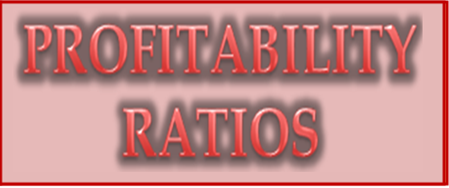
Profitability Ratios
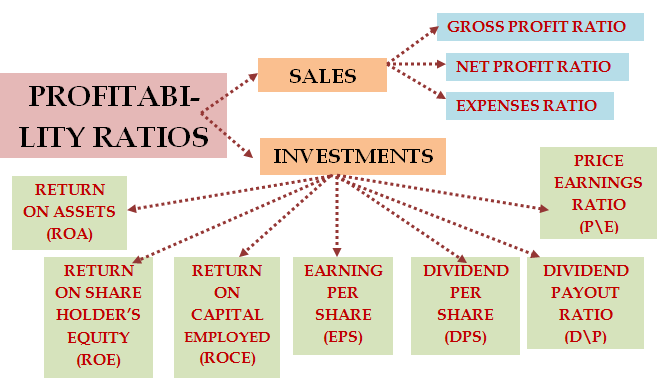
Profitability Ratio with respect to SALES:
Difference between GROSS PROFT & NET PROFIT?
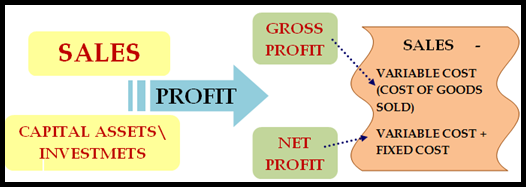
Gross Profit Margin Ratio

Net Profit Margin Ratio

Profitability Ratios with - Investments
Return on Assets:


Retun on CAPITAL EMPLOYED(ROCE):


Capital Employeed:
(i)Gross Capital Employeed:It referres to Total Assets which is a combination of Fixed + Current
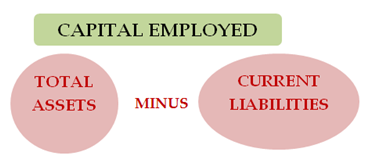 (ii)Net Capital Employeed:It referres to Total Assets - Current Liabilties
(ii)Net Capital Employeed:It referres to Total Assets - Current Liabilties
Capital Employeed: DEBT + EQUITY = CAPITL EMPLOYED
Capital Employeed = Fixed Assets + Net Working Capital
Retun on SHARE HOLDER'S EQUITY(ROE):

Share holder's Equity:

Earning Per Share

Dividend Per Share

Dividend Payout Ratio

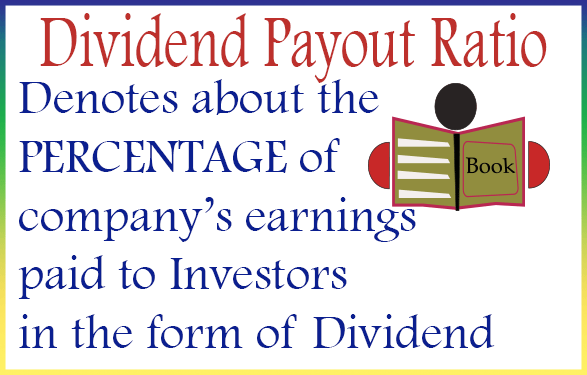
Price Earnings Ratio(P/E)


